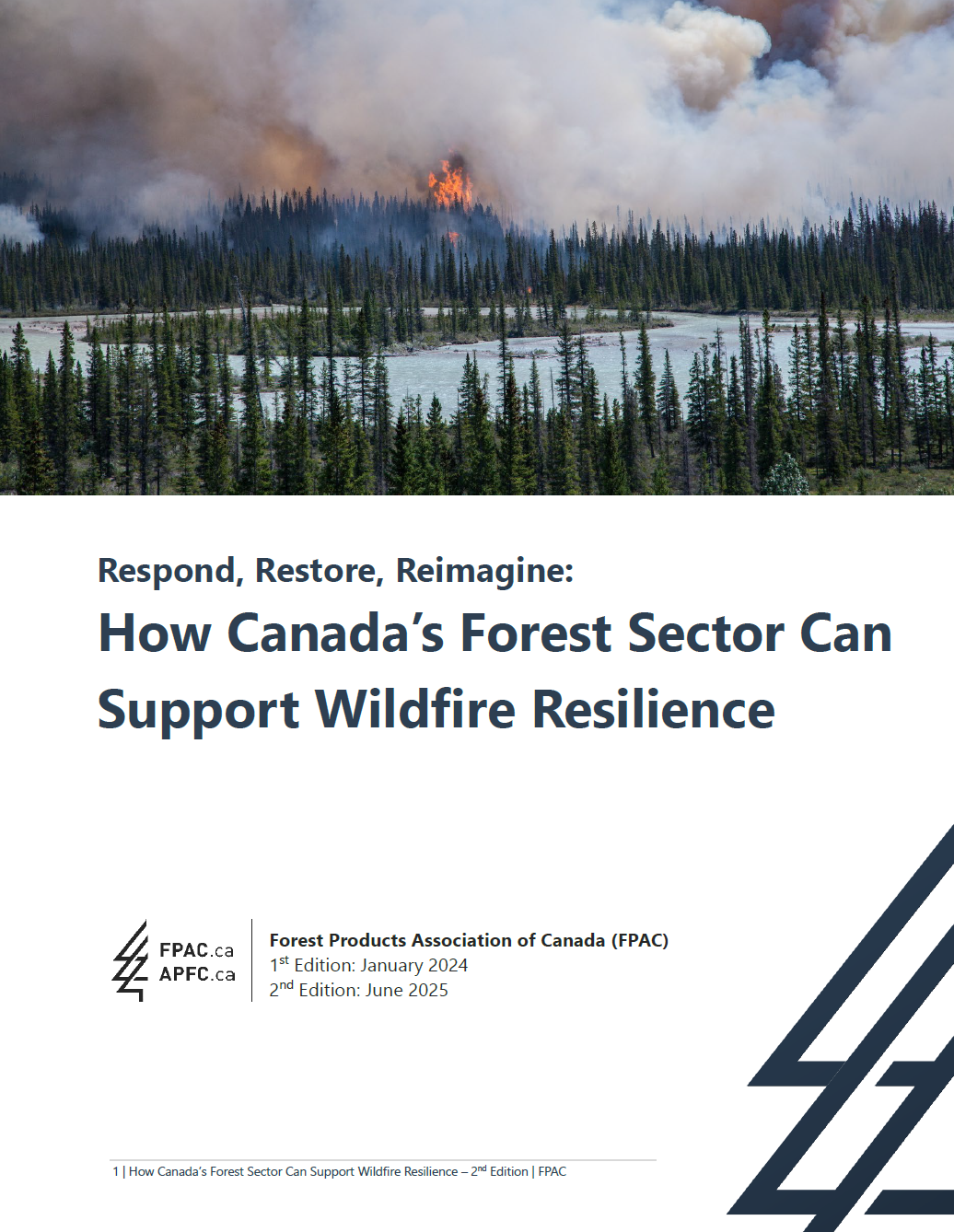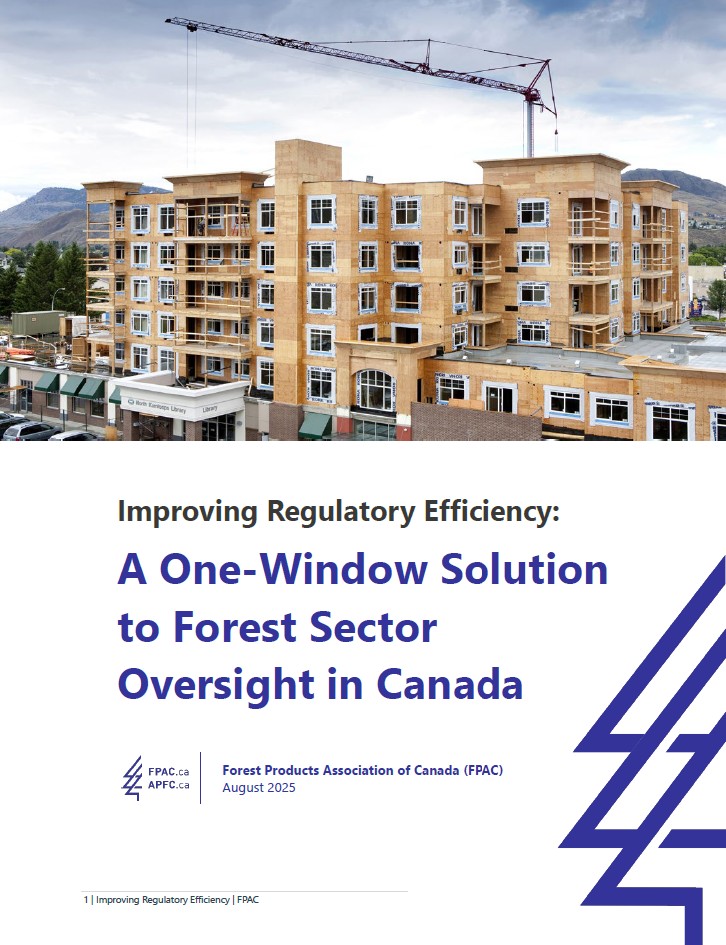Executive Summary
Canada is Burning Faster and More Severely than Ever
The impacts of climate change, including rising temperatures, droughts, extreme weather, a history of aggressive fire suppression, and other factors have led to more severe wildfire seasons in Canada. These wildfires pose significant risks to public safety, infrastructure, and the environment, generating 2.2billion tonnes of greenhouse gas emissions in 2023 alone—more than triple Canada’s total annual emissions in 2021 and costing $1 billion annually formost of the last decade. After two consecutive record-shattering wildfire seasons in a row—and with the 2025 season starting early and with brutal force—all levels of government in Canada must work to enhance the health and resilience of our forests, leveraging the forest sector as a key partner in delivering holistic solutions.
How the Federal Government Can Unlock Forest-Based Solutions
Many of the devastating and costly impacts of wildfires can be mitigated through active forest management, which the federal government can support by:
1. Scaling up federal forest fire mitigation and prevention activities by investing significantly more in initiatives like the Wildfire Resilient Futures Initiative. The government should emulate successful models such as The Forest Enhancement Society of BC, prioritize fire prevention as a national policy objective, and amend regulatory barriers to this objective, including those posed by the Fisheries Act, Migratory Birds Convention Act, and Species at Risk Act.
2. Supporting the development and use of ‘best in class’ predictive fire models that are accurate, up-to-date, and adaptable to enable forested communities, First Nations, businesses and the public make informed decisions for FireSmart planning, focusing on regionalized models that reflect recent fire patterns.
3. Enhancing capacity for Indigenous-led fire management by extending financial and logistical support to Indigenous communities, utilizing existing Indigenous clauses in the Wildfire Resilient Futures Initiative and the Fighting and Managing Wildfires in a Changing Climate program.
4. Leverage the WildlandFire Innovation and Resilience Centre of Excellence and fund place-based knowledge mobilization initiatives that fosters a whole-of-society approach by bringing together awide group of impacted stakeholders and experts that focuses on on-the-groundsolutions and prevention.
Context
Forest fires (commonly referred to as ‘wildland fires’ or ‘wildfires’) are a natural part of the Canadian landscape and play a crucial role in forest renewal. However, a combination of climate change, increasingly frequent pest infestations, and an unnatural accumulation of fuel loads (i.e., highly flammable branches, leaves, and tree segments that normally would have burned) – which are accumulating from decades of aggressive fire suppression activities without corresponding efforts to remove flammable materials — are creating severe wildfire seasons that are far more damaging than natural fire cycles. Severe wildfires are now Canada’s largest net source of GHG emissions, and pose significant risks to people, infrastructure, and the environment.
At all levels of government in Canada, there is growing recognition that we must enhance the health and resilience of our forests. Yet it is increasingly evident that current government processes are failing to mitigate the growing threat of wildfires. A substantial and proactive escalation of government-led fire management efforts are necessary to effectively mitigate catastrophic fires and their impacts on Canadians.
Canada’s Forest Sector Can Help Integrate Wildfire Resilience through Forest Management
Canada’s foresters offer essential “boots on the ground” support that helps keep communities safe and improve forest conditions. The forest sector can offer unique knowledge, skills, and resources to deliver on national fire resilience goals through the following activities – which many forest sector companies and contractors already conduct and would like to scale up:
• Immediately recognize and respond to wildfire risk by applying a wildfire risk lens when planning activities, collaborating with local forested communities, Indigenous groups, and provincial governments, and implementing climate smart and FireSmart forestry practices.
• Contribute to the revitalization of cultural burning by working closely with Indigenous Peoples in the development and implementation of forest management plans that combine Indigenous cultural burning practices with modern forestry techniques.
• Inform the development of effective policy tools and frameworks by leveraging the direct knowledge and experience of regulated communities (i.e., forest sector firms) regarding where and how existing policies may impede fire prevention and mitigation efforts.
• Utilize networks for coordination and capacity-building, tapping into the forest sector’s strong relationships with Indigenous Peoples, local communities, the conservation community, as well as experts and knowledge holders in the field of wildland fire. Doing so can bolster the coordination, funding and capacity-building of initiatives that enhance forest health and resilience on the ground.




.png)



